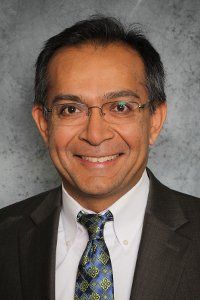7 Steps to Smarter Team Meetings

Team meetings. They can be the worst of things or the best of things.
I know many business people (not just CPA practice owners) who dread them. The most common complaint I hear is that the meetings are boring, unnecessary, and rob the participants of time that could have been better spent otherwise.
An effective team meeting, however, can drive your practice forward like a steam engine at maximum speed, powered by the enthusiasm and loyalty of your team – and no one will feel bored or that their time was wasted.
Here are seven tips shared with me by Mary Werner, founder of Werner Coaching & Consulting, Inc. Werner is a CPA and former CPA firm partner, so not only has she attended her fair share of team meetings, but she knows our business as well. Here’s what Mary recommends:
-
Have an Agenda
-
Consider Who’s Needed
-
Think Quality, Not Quantity
-
Keep Devices Hidden
-
Keep Things on Track
-
Appoint a Minute Taker
-
Hear Everyone
Have an Agenda.
A meeting without an agenda can feel like a jar of spilled marbles, rolling out of control in a million different directions. Participants may chatter on forever about nothing in particular, or perhaps worse, clam up because they have nothing to say, forcing the team leader to drone on about something uninteresting because he or she feels the need to fill the time.
Instead, set a specific agenda. Decide in advance what you want to accomplish in the meeting and share that agenda with the team ahead of time.
Consider Who’s Needed.
Before you send out that meeting invitation, ask yourself – do all of these people really need to be there? Some team leaders have the tendency to make all of their meetings “all-hands” meetings when in fact it may not be necessary. Show respect for your team members’ time. Invite only those who are critical to the agenda.
Think Quality, Not Quantity.

Do you feel compelled to have regular meetings just because you think you should? Getting things done and meeting (or surpassing) goals doesn’t come down to regularity of meaningless meeting, but one that has a game plan, an agenda, and time constraints. An agenda, with the right people focusing on the right issues; now that is the alternative to creating some quality conversation.
Werner says, “I’ve attended a lot of meetings in my career that were simple report-outs – people going around the table saying what they are working on or what the current status is. A lot of those meetings can be handled now via email or memos.” A data report that is personal to the recipient, maybe, but in my experience, the most beneficial forms of communication are those that are face to face with my employees.
Acknowledge the needs of your employees, make sure that they understand your goals, and know that the topic of discussion is sensitive to the type of meeting that is necessary. Whether it is one-on-one or all-hands, “It is so important,” Werner expresses “to really ask questions and identify if there are issues on the mind of your staff or if they are stuck on a particular project that they need help with. Or, if you want to delegate more work to them, so you want to meet with them to be clear about what your expectations are.”
Keep Devices Hidden.
Consider setting a rule that all devices (smartphones, tablets) must be off the table during a meeting. Set the example by leaving yours in your pocket-- or better yet, back in your office. Devices distract and can prevent team members from contributing and being fully engaged.
Keep Things on Track.
 I know one practitioner who has a white board in his conference room, and at the start of each team meeting, he writes the agenda on the board for everyone to see. That way, if anyone begins to veer off-topic, he can point to the board and say, “OK, but let’s remember why we’re here.” As the team leader, that’s your job – to keep the conversation on track.
I know one practitioner who has a white board in his conference room, and at the start of each team meeting, he writes the agenda on the board for everyone to see. That way, if anyone begins to veer off-topic, he can point to the board and say, “OK, but let’s remember why we’re here.” As the team leader, that’s your job – to keep the conversation on track.
This same practitioner has another technique that I like: when someone wanders off-topic, he writes that topic in the lower corner of the white board and says, “We’re going to table this discussion for a future meeting, and I’ll write it here so we remember to address it at a different time. For now, let’s return to the agenda.” It shows respect for everyone’s concerns and keeps potentially important off-topics from falling through the cracks.
Appoint a Minute-Taker.
Werner says, “You need to have someone who is documenting the discussion, the decisions, and the action steps.” It doesn’t always have to be the same person. The duty of “scribe” can be rotated and shared. The point taking notes is so that you, the team leader, can follow up and hold team members accountable for their part. After the meeting, distribute the minutes to everyone.
Hear Everyone.
Thinking back on some of the worst meetings she’s attended, Werner says it’s tough “when the owner or practice leader dominates the whole conversation and doesn’t allow team members to contribute.” In such a situation, team members eventually learn that it’s a waste of time to bother commenting or sharing ideas because their leader doesn’t listen to them anyway. Don’t let that happen to you. Simply by doing their jobs from day to day, your team members gain tremendous insight into what your target client wants and how they might be enticed to do business with you. They also know better than anyone else how their area of the practice could run better. Always make time for everyone to be heard, and encourage feedback.
To learn more effective business strategies and time management techniques for your growing practice, follow us on Facebook , contact our office at (732) 566-3660 or visit us at https://cpamarketinggenius.com .


New Paragraph
Salim Omar
Salim is a straight-talking CPA with 30+ years of entrepreneurial and accounting experience. His professional background includes experience as a former Chief Financial Officer and, for the last twenty-five years, as a serial 7-Figure entrepreneur.

Salim Omar
Salim is a straight-talking CPA with 30+ years of entrepreneurial and accounting experience. His professional background includes experience as a former Chief Financial Officer and, for the last twenty-five years, as a serial 7-Figure entrepreneur.

Salim Omar
Salim is a straight-talking CPA with 30+ years of entrepreneurial and accounting experience. His professional background includes experience as a former Chief Financial Officer and, for the last twenty-five years, as a serial 7-Figure entrepreneur.

Salim Omar
Salim is a straight-talking CPA with 30+ years of entrepreneurial and accounting experience. His professional background includes experience as a former Chief Financial Officer and, for the last twenty-five years, as a serial 7-Figure entrepreneur.

Salim Omar
Salim is a straight-talking CPA with 30+ years of entrepreneurial and accounting experience. His professional background includes experience as a former Chief Financial Officer and, for the last twenty-five years, as a serial 7-Figure entrepreneur.

Salim Omar
Salim is a straight-talking CPA with 30+ years of entrepreneurial and accounting experience. His professional background includes experience as a former Chief Financial Officer and, for the last twenty-five years, as a serial 7-Figure entrepreneur.

Salim Omar
Salim is a straight-talking CPA with 30+ years of entrepreneurial and accounting experience. His professional background includes experience as a former Chief Financial Officer and, for the last twenty-five years, as a serial 7-Figure entrepreneur.

Salim Omar
Salim is a straight-talking CPA with 30+ years of entrepreneurial and accounting experience. His professional background includes experience as a former Chief Financial Officer and, for the last twenty-five years, as a serial 7-Figure entrepreneur.

Salim Omar
Salim is a straight-talking CPA with 30+ years of entrepreneurial and accounting experience. His professional background includes experience as a former Chief Financial Officer and, for the last twenty-five years, as a serial 7-Figure entrepreneur.

Salim Omar
Salim is a straight-talking CPA with 30+ years of entrepreneurial and accounting experience. His professional background includes experience as a former Chief Financial Officer and, for the last twenty-five years, as a serial 7-Figure entrepreneur.












